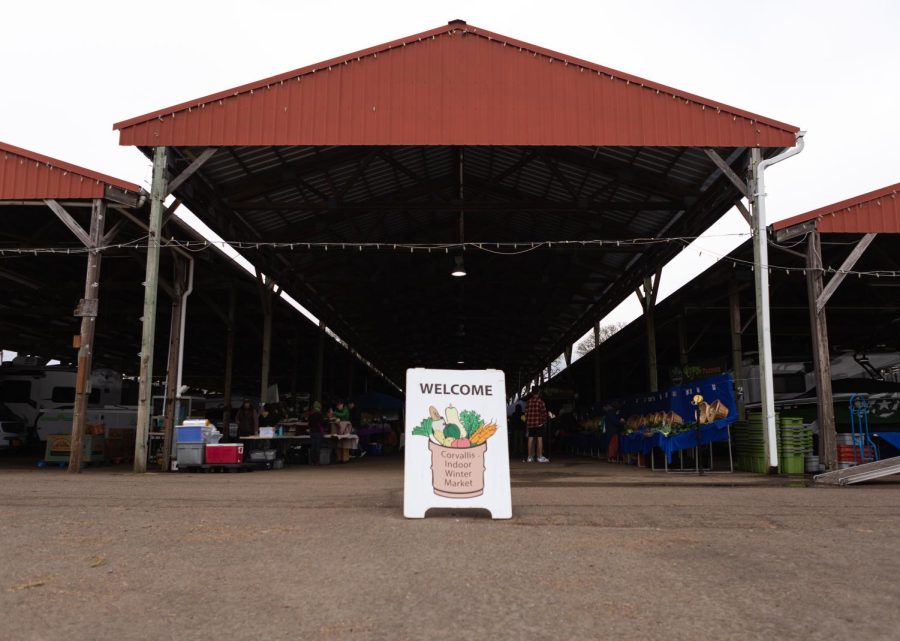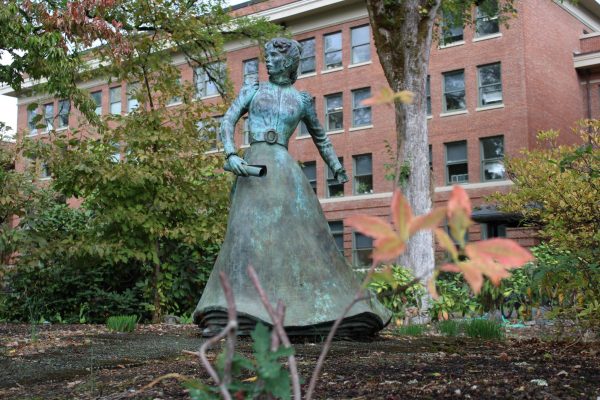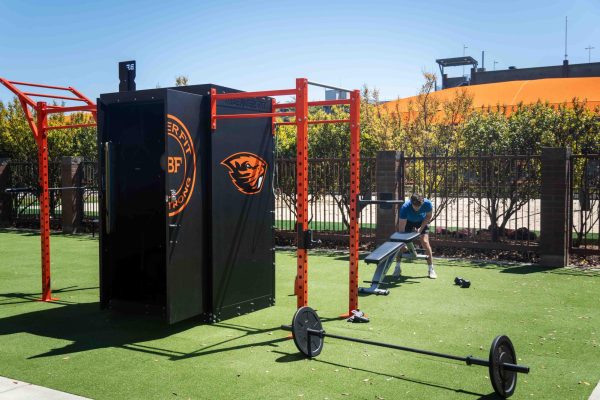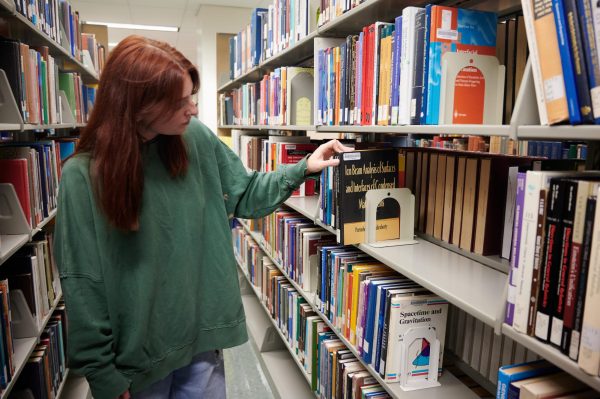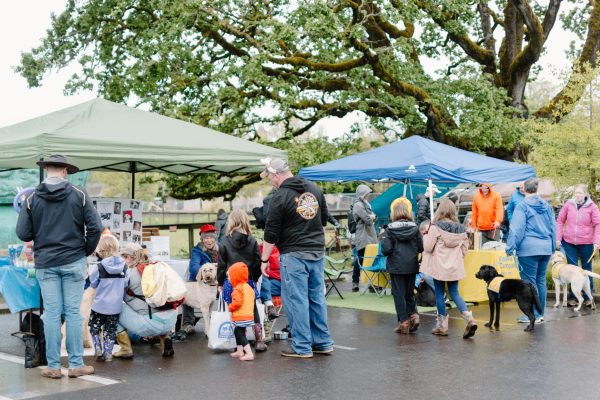“A Mutually Beneficial Program:” How the Corvallis Indoor Winter Farmers Market meets community need
The main entrance at the Corvallis Winter Market on January 28th, 2023 located at Guerber Hall 110 SW 53rd Street. It takes place every Saturday from 9am to 1pm until April 8th, 2023.
March 2, 2023
Bright fresh fruits and vegetables line the walkway of the Benton Oaks RV campground on Corvallis’ wintery Saturday mornings. With protection from Oregon’s rainy winter months, the Corvallis Indoor Winter Farmers Market runs from Jan. 14 through April 8 in the Benton County Fairgrounds and meets several needs in the community.
“(The market) fills a gap for a number of producers who have the ability to sell during what is the off-season for most markets,” said Lynne Miller, the manager of the CIWFM.
Very few local farmers’ markets in Oregon operate through winter months and if they do, most only have a select few weekends that they run. The CIWFM gives vendors a weekly reliable site throughout the winter and gives local residents continued resources to buy locally.
The other major need it meets is for individuals receiving the Oregon trail SNAP or EBT benefits. SNAP is a federally-funded program providing a monthly stipend for most cold food items. College students aged 18 to 49 who attend school at least half-time may be eligible for SNAP by meeting income guidelines and additional criteria.
The farmers market works to be accommodating with the use of SNAP and has a special Double Up Food Bucks program where, if you spend $20 of your SNAP dollars at a participating farmers market, they will match up to $20 so people can spend a total of $40 dollars on locally grown fruits and vegetables.
This program is also available at most of the farmers’ markets in Linn and Benton counties, along with many others in Oregon, explained Rebecca Landis, the market director of the Corvallis-Albany Farmers’ Markets.
Yet, the CIWFM is one of the only consistent markets to run through winter.
Each participating farmers market has its own “currency” and that currency is only valid at that specific market. The CIWFM gives out wooden tokens when matching SNAP payments. A token purchased at CIWM that can only be spent at CIWM and does not expire. However, any DUFB received at any market can be spent at any participating farmers’ market.
Tokens can be spent on the typical SNAP items, and the DUFB is exclusive to fruits, vegetables, mushrooms, herbs, beans and vegetable starts.
The program creates a win-win situation, Miller said.
“Vendors benefit greatly because when the customers have more money, they spend more, and that means more income for the vendors,” Miller said.
“It’s a mutually beneficial program,” said Chad Shinn, a consistent vendor from Camron Ridge Farmstead. Shinn and his wife Liz run a farm in Jefferson, just 30 minutes outside Corvallis, growing and selling a wide array of “farm fresh, top quality, grown responsibly produce” which, they claim is “the most nutritious and delectable!”
During the market, vendors collect tokens that are spent at their booths, and at the end of each week, the market reimburses them for those tokens. By tracking their distribution they know that at the average CIWFM, around $1,500 are redeemed in SNAP and $1100-1200 in DUFB per week.
“It’s a seamless process,” Shinn said.
The DUFB rules are heavily influenced by federal funding programs, which are mostly about produce.
“We do try to coach people on what they can spend each currency on, and most people are able to get what they want with a little planning,” Miller said.
Farmers’ markets shoulder most of the work and cost to distribute SNAP tokens, said Landis. Landis and other CIWFM managers had to apply to the Farmers Market Fund in Portland in order to receive funds coming from federal, state and local grants to allow Double Up Food Bucks at the CIWFM.
“There is a lot of record keeping and accounting needed to do SNAP and DUFB, but it’s become an essential part of what we do to run markets,” Landis said.


